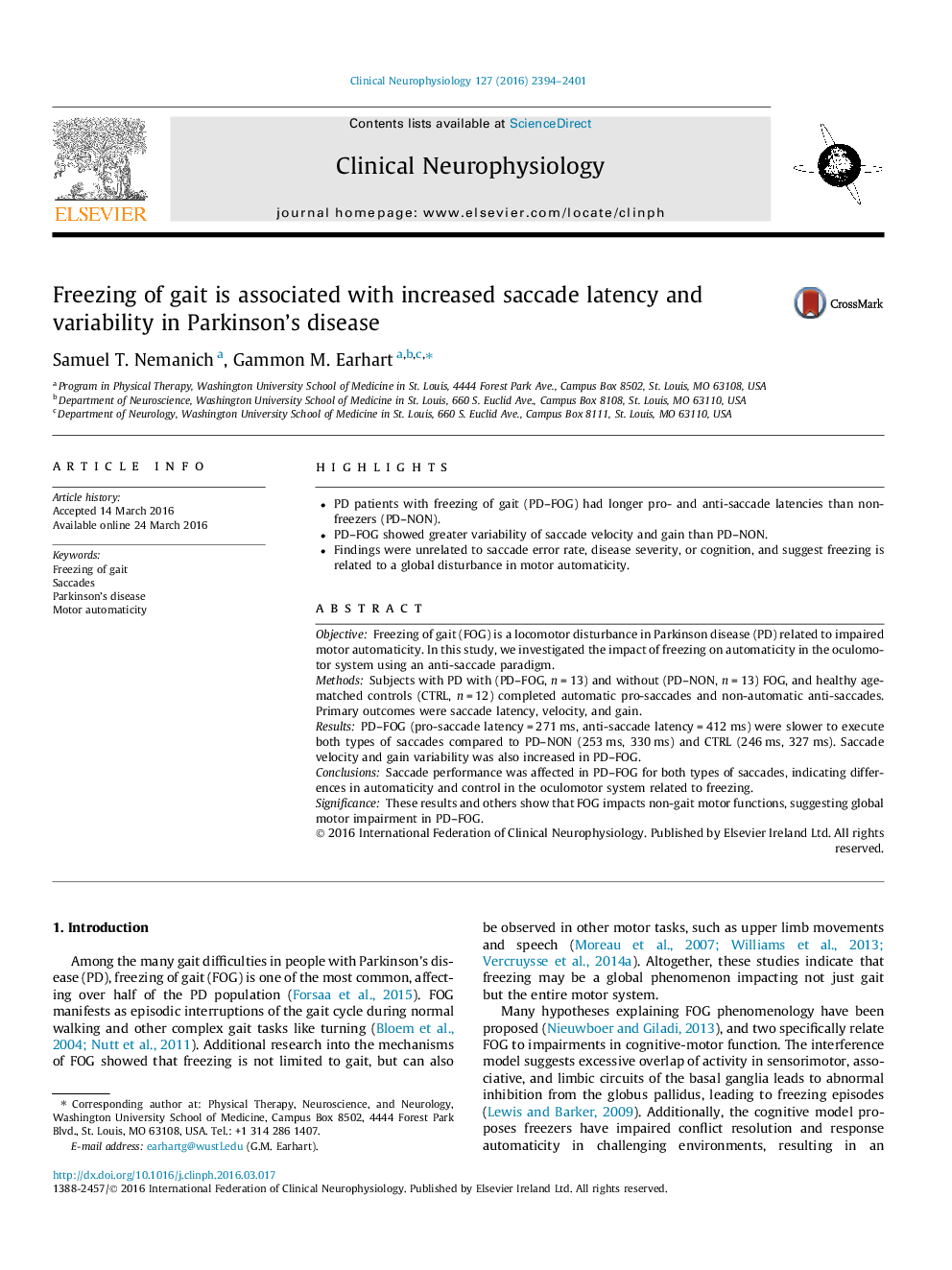| Article ID | Journal | Published Year | Pages | File Type |
|---|---|---|---|---|
| 3042751 | Clinical Neurophysiology | 2016 | 8 Pages |
•PD patients with freezing of gait (PD–FOG) had longer pro- and anti-saccade latencies than non-freezers (PD–NON).•PD–FOG showed greater variability of saccade velocity and gain than PD–NON.•Findings were unrelated to saccade error rate, disease severity, or cognition, and suggest freezing is related to a global disturbance in motor automaticity.
ObjectiveFreezing of gait (FOG) is a locomotor disturbance in Parkinson disease (PD) related to impaired motor automaticity. In this study, we investigated the impact of freezing on automaticity in the oculomotor system using an anti-saccade paradigm.MethodsSubjects with PD with (PD–FOG, n = 13) and without (PD–NON, n = 13) FOG, and healthy age-matched controls (CTRL, n = 12) completed automatic pro-saccades and non-automatic anti-saccades. Primary outcomes were saccade latency, velocity, and gain.ResultsPD–FOG (pro-saccade latency = 271 ms, anti-saccade latency = 412 ms) were slower to execute both types of saccades compared to PD–NON (253 ms, 330 ms) and CTRL (246 ms, 327 ms). Saccade velocity and gain variability was also increased in PD–FOG.ConclusionsSaccade performance was affected in PD–FOG for both types of saccades, indicating differences in automaticity and control in the oculomotor system related to freezing.SignificanceThese results and others show that FOG impacts non-gait motor functions, suggesting global motor impairment in PD–FOG.
